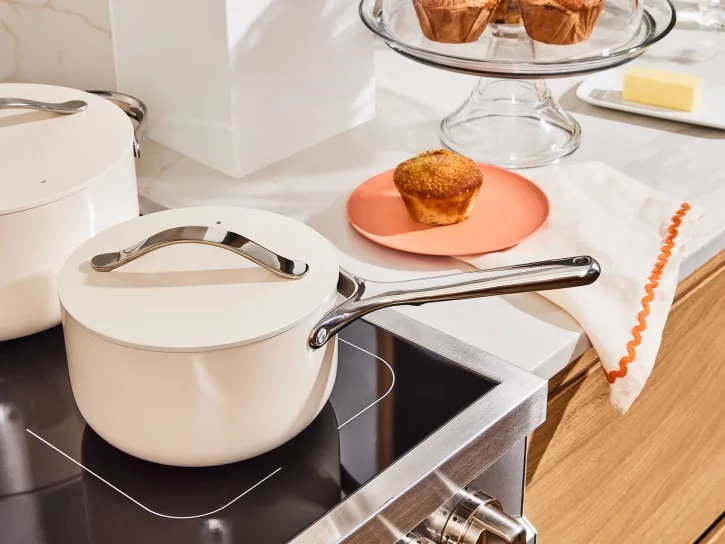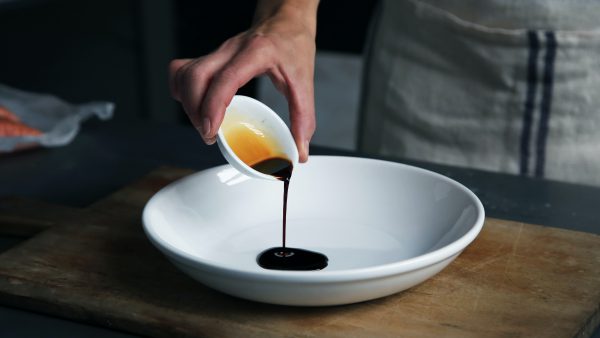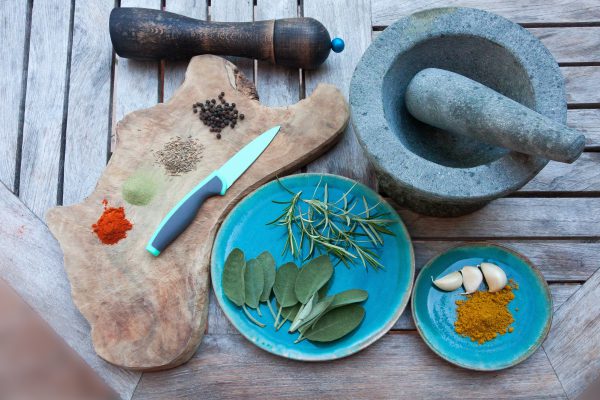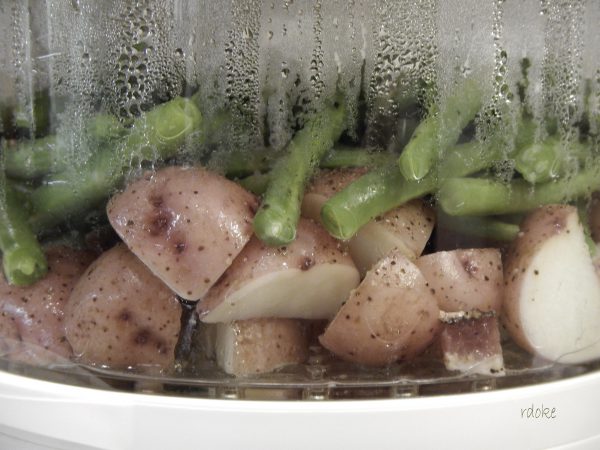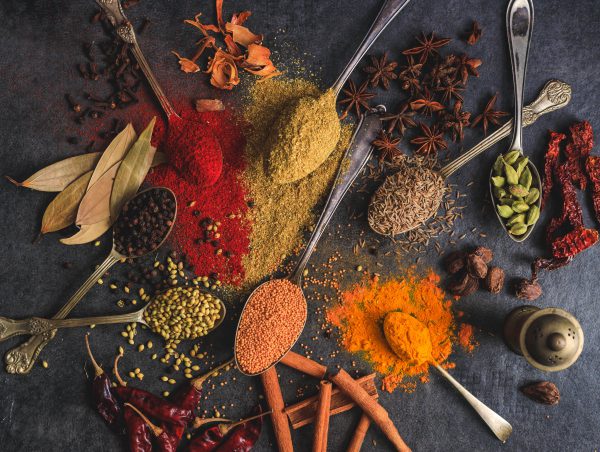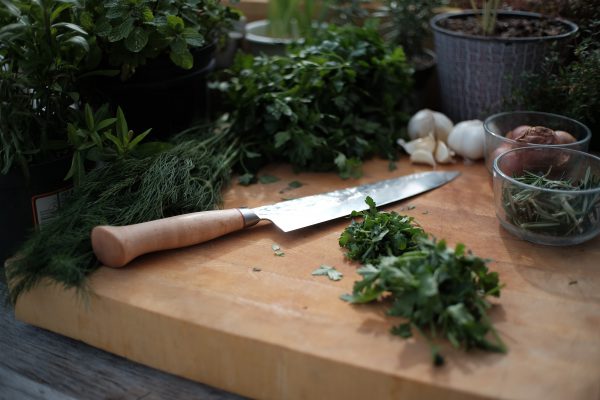Last Updated on October 20, 2023
As their name suggests, saucepans are the number-one tool for cooking sauce. They are also handy for making soups and stews or preparing delicious gravies. Besides, when you want to cook or heat up some liquid food, using a saucepan is so much easier than a frying pan, skillet, or pot.
The main thing that differentiates saucepans is the material they’re made of – stainless steel, enameled steel, cast aluminum, copper, or cast iron. This is important because the material doesn’t only determine the utensil’s price, but also its heat conductivity and weight.
Here we prepared a guide that’ll answer all your questions about saucepans, including a list of the best saucepans you can get for your kitchen.
The Best Cookware Material
Different cookware materials work better with different cooking styles. One of the main reasons for this — aside from the non-stick properties and the durability of the material — is the thermal conductivity.
The thermal or heat conductivity of the material determines how fast the heat from the stove will transfer to the bottom of the pot and the food you’re cooking. The better the conductivity, the faster the heat exchange. However, materials that are easy to heat up are also quick in giving off heat, as in the case of stainless steel. A lower thermal conductivity, on the other hand, would absorb the heat more slowly but retain it longer, like a cast-iron skillet.
Stainless Steel: Robust, Durable, and Easy to Care For
Stainless steel pans are the most common type of saucepan. They are durable, robust, and easy to clean and care for. Stainless steel conducts the heat rather slowly, but it stays hot for a long time. This is why these pots usually have a sandwich base with an aluminum or copper layer in between, which improves the heat transfer from the stovetop to the bottom of the pot.
Steel Enamel: Slow Heat Conduction but Good Heat Retention
Steel-enamel pots have the same slow thermal conductivity as stainless steel cookware and often use a sandwich base as well. Pure steel-enamel pots work best with an induction cooktop, as they respond particularly well to the magnetic field and even heat up faster than pots with sandwich bases.
Cast Aluminum: Good Thermal Conductivity, Poor Heat Retention
Cast aluminum pans are lightweight, easy to maneuver, and relatively easy to take care of since you can wash them with soap. However, simple designs can warp when exposed to heat, oxidize easily, and wear out quickly.
Unlike stainless steel pots, cast aluminum pans have a higher thermal conductivity. As a result, they heat up quickly, but also give off the heat fast. Plus, cleaning the pan can be a nuisance if it lacks a non-stick coating.
Copper: High-Maintenance, Excellent Heat Conductor
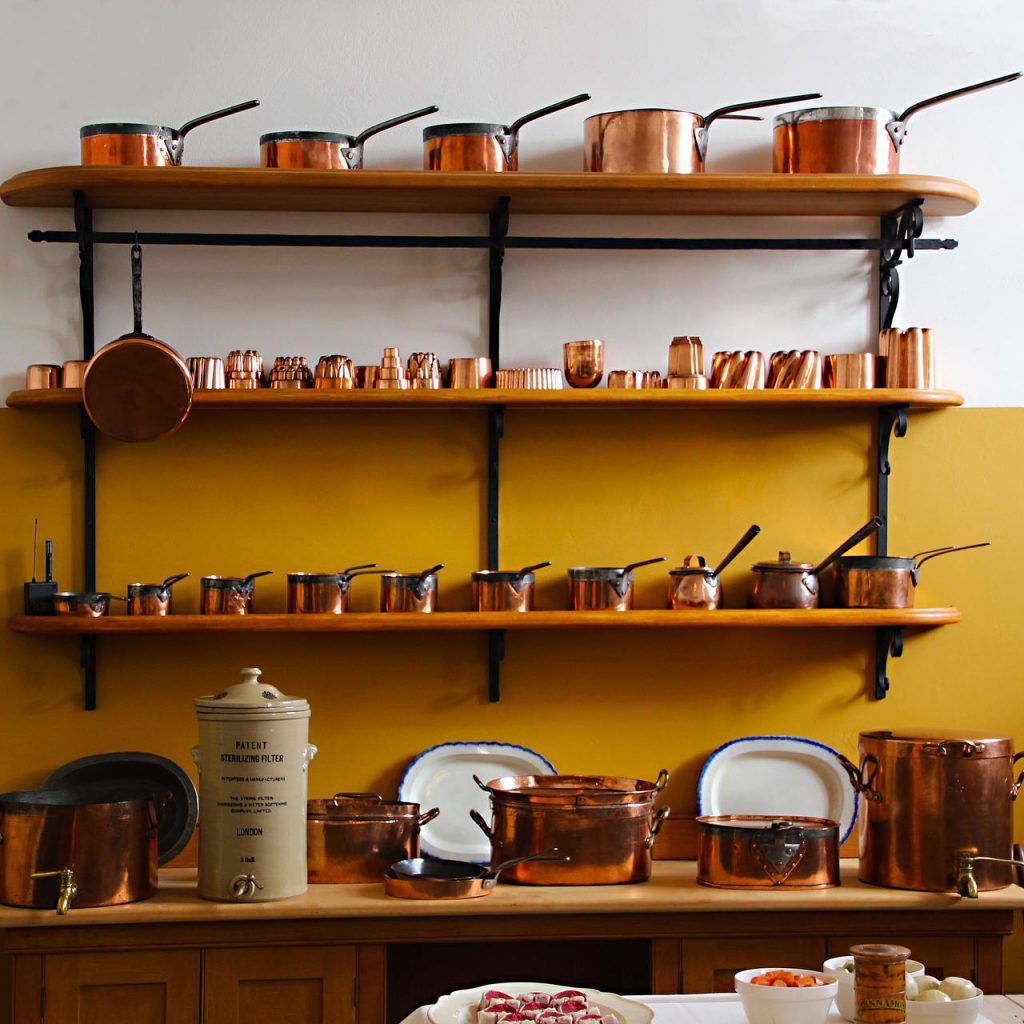
Copper pots are a favorite among experienced cooks, so you’ll definitely find them in professional kitchens. Of all materials, copper has the highest thermal conductivity, but it gives off the energy quickly to the environment. Still, the advantage of its excellent conductivity is that you can heat the food very precisely.
The downside of copper pots is that they have high demands on care. They can change their color in time unless you polish them regularly (every 6 months at least) with a specialty copper cleaner. Plus, if you want to use these valuable products for years to come, you should keep abrasive utensils away from them.
Cast Iron: Slow Conductors of Heat, Good Braising Specialists
Cast iron pots are far from the best heat conductors, which makes them a good choice for stews that need to cook for a long time and cook evenly at a low temperature. These pots can also withstand the high temperatures required to prepare the delicious crispy roasted meat.
However, a major disadvantage of pure cast iron is its tendency to rust. If that bothers you, you can stick to the easier-to-maintain enameled versions instead.
Special Cases: Induction and Glass Ceramic Stovetops
As a footnote, keep in mind that different pots work with different stovetops. For example, only pans with a ferromagnetic base work on induction cookers. You should avoid aluminum pots and use only sandwiched stainless steel pots. Similarly, the use of cast iron pots is generally not recommended for glass-ceramic stovetops, as they can damage the sensitive surface.
Best Saucepans for Your Kitchen
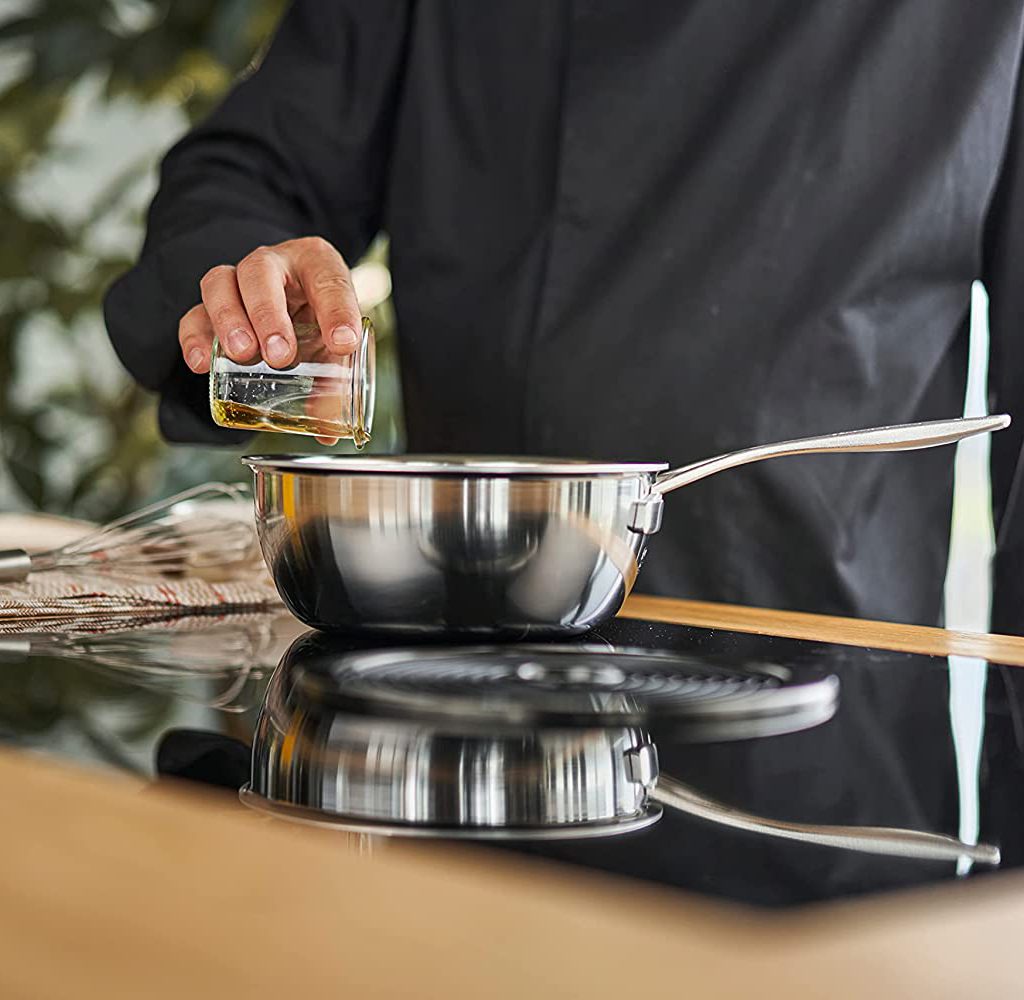
Best Heat Conduction: Demeyere Industry 3.5 quarts 5-Ply Stainless Steel Essential Pan
This Demeyere saucepan remains brand new even after years of cooking, thanks to its patented surface treatment. If you like your cookware shiny and spotless, this pan will satisfy your eye appetite, as it doesn’t let you leave a fingerprint on it.
It also has excellent heat conduction and retention, thanks to its 5 layered material. The handle is stainless steel but welded, so there’s no chance you’ll burn your hands when using it.
You can put this saucepan in the oven up to 260°C, on a boiler or an induction stove, and in the dishwasher. Its rim is suitable for pouring whatever sauce or soup you’ve made without making a mess. The only downside of the Demeyere saucepan is its price, but we think it’s a good bang for your buck, considering its quality and durability.
Best for Bakers: Cuisinart French Classic 3-Ply Stainless 3-Piece Saucepan and Double Boiler Set
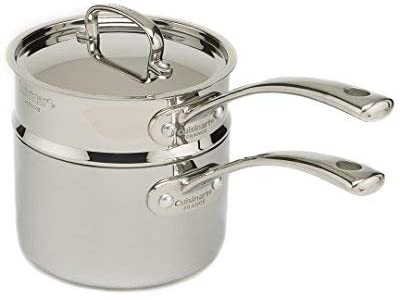
This 3-piece Cuisinart set satisfies all your needs from a saucepan. The set includes a 3-quart saucepan, a double boiler, and a lid. Sure, you can improvise the double boiler with other items in your kitchen, but this set is great for bean-marie cooking, as it provides even heating and gives you full control over the heating process. Needless to say, it will definitely step up your custard game.
Its aluminum core with 3-layered material guarantees decent heat conduction and retention. When you’re finished cooking, simply put everything in the dishwasher and call it a day.
Best for Sauces: All-Clad Stainless Steel 3-Ply Bonded Saucepan With Lid
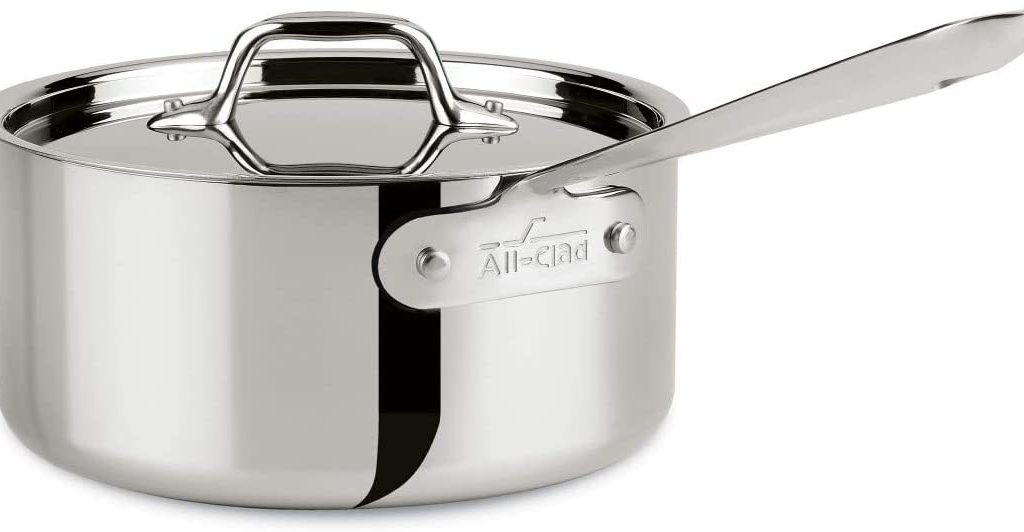
This 3-quarts saucepan has high straight sides that are great for stirring sauces. The material is 3 layered with stainless steel and a sandwiched aluminum core that ensures even heat conductivity and retention. The whole pan can go into the oven up to 315°C on the broiler or induction stovetops – in which case the handle stays surprisingly cool.
The All-Clad stainless steel saucepan is almost all-purpose and great for many tasks – from making soups to boiling sauces for 2 people. If you want a more comprehensive set under your elbow, you can pick from 1-quart, 1.5-quart, 2-quart, 3.5-quart, and 4-quart saucepans of this brand. They are all very durable and dishwasher-safe, and their handle has an opening that allows you to hang them up on your pan rack.
Best Copper: Mauvile M’passion 3.7-Quart Copper Sugar Saucepan
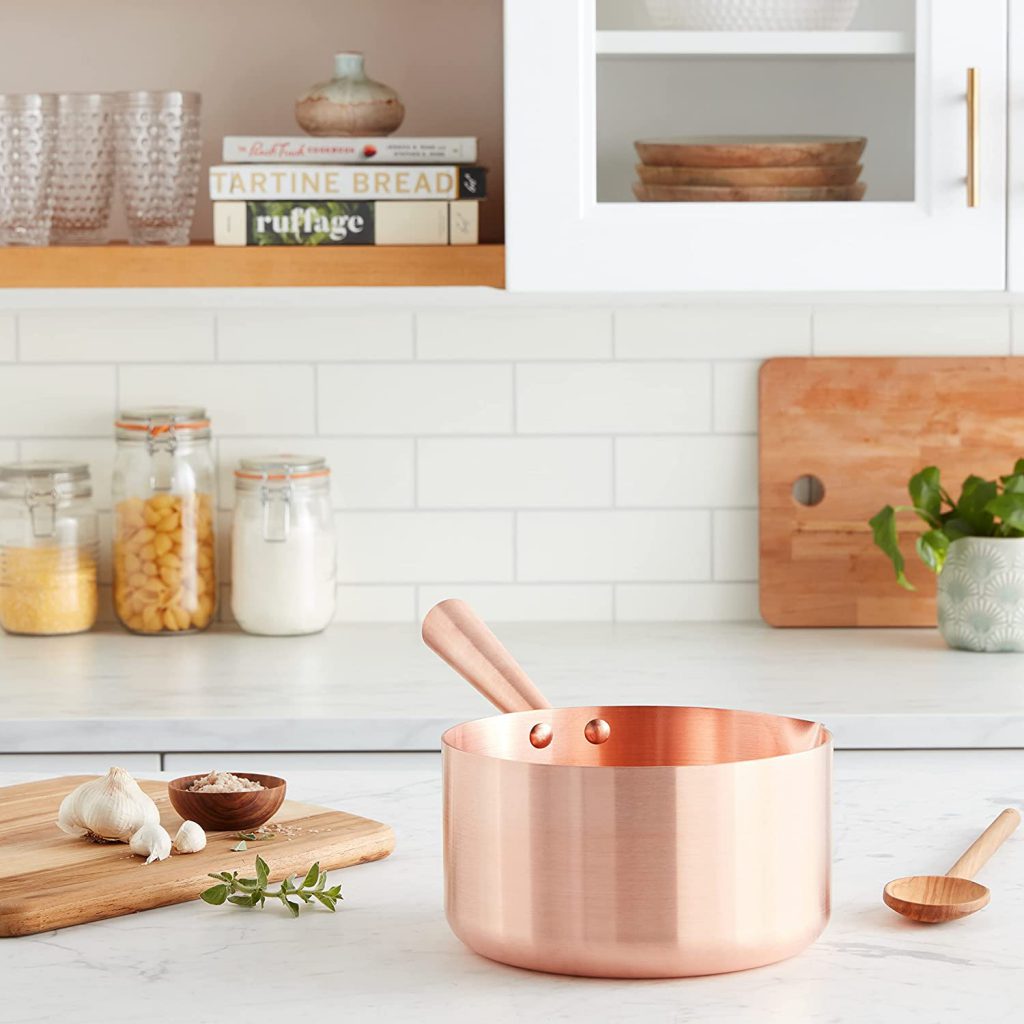
If you’re not familiar with the old-fashioned way of fudge making, let us introduce you to the Mauvile copper saucepan. This gleaming copper saucepan is an excellent heat conductor that distributes the heat evenly on the surface, better than the 3 or 5-layered stainless steel saucepans. And it doesn’t retain the heat either, so once you take it off the stove, it starts to cool down quickly.
This pan is perfect for melting chocolate or sugar, where you need perfect heat control against crystallization. It also has a pour spout so that you can easily transfer any liquid out of the pan. But you have to pay very close attention when you’re cooking or reheating with this saucepan as it may burn your food if it gets too hot. Finally, don’t forget to use a potholder, as the copper handle gets its share from the heat as well.
Best Decorative: Caraway 3qt Sauce Pan
This beautiful ceramic saucepan with numerous colorful variations is just pure eye candy. It comes in 8 different colors so you can pick the one that matches your kitchen decor best.
Caraway’s products have non-toxic coating that is non-stick and can work on all stove top types. They are also oven-safe up to 550 degrees Fahrenheit, which gives you more flexibility on how to cook your delicious meals. Quickly brown the ingredients on the stove top then move it into the oven for slow cooking. This is also useful if you are cooking for a large group and run out of stove top burners.
Best Nonstick: Calphalon Classic Nonstick Saucepan With Cover
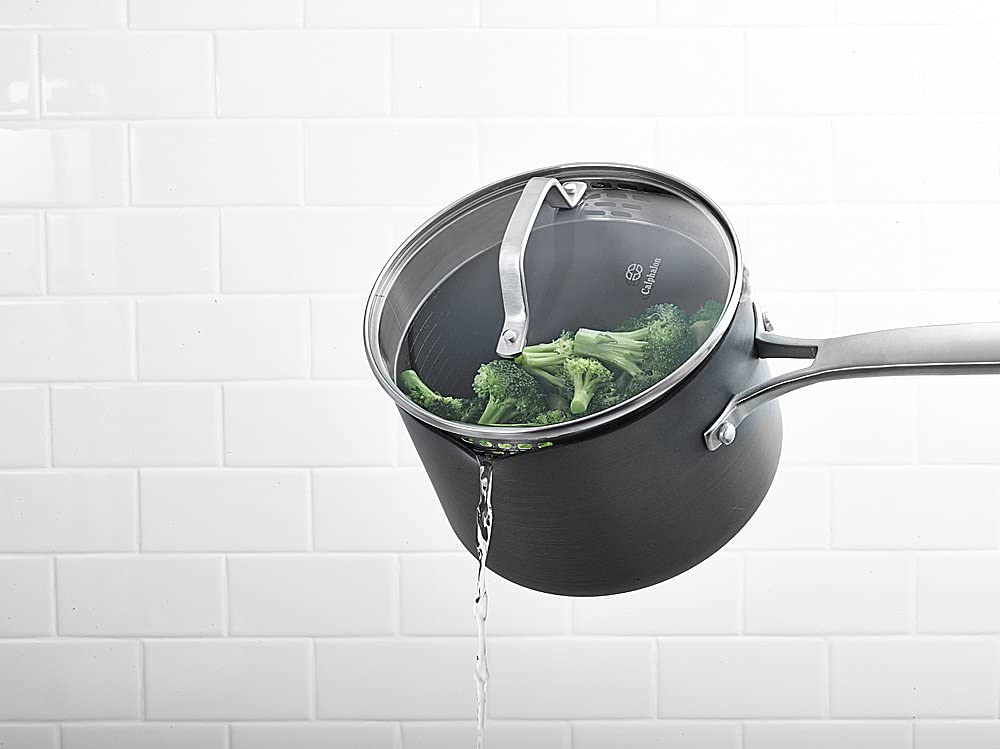
This dual-layered nonstick saucepan is very easy to use for your everyday tasks. The hard-anodized aluminum material heats up decently and evenly distributes the heat better than regular non-stick Teflon.
The nonstick surface makes sure no food sticks to the pan, which can be a deal-breaker with stainless steel, copper, or cast-iron saucepans. Instead of using cups, you can measure liquids with the help of the measuring marks in the pot, while the pouring spout and strainers on its lid save you time and dirty dishes. The saucepan and the lid can go into the oven up to 230°C, and they are guaranteed for a lifetime.
Best Ferromagnetic: MSMK 3.5 Quart Saucepan with Lid
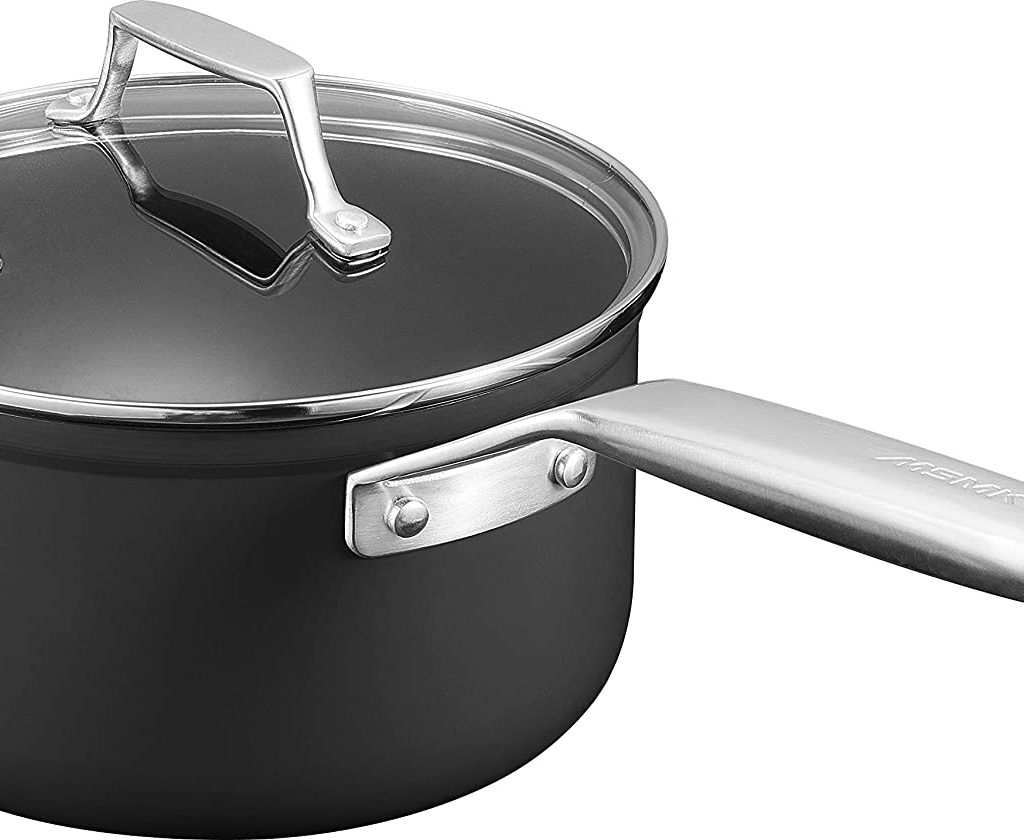
This durable 3.5-quarts saucepan is great for whatever you might need from a saucepan. The Tuff Limestone coating makes it more durable than any non-stick pan. Its stainless steel bottom distributes the heat decently, and the coating is scratch-resistant, but you still shouldn’t use any spoon or spatula other than wood, rubber, or silicone.
It’s a very durable and sturdy saucepan, but it doesn’t have a pour spout to transfer liquids out. If you have an induction or a glass stovetop, this saucepan works great with them too. You can always put it in the oven up to 370°C and wash it in the dishwasher in a snap.
Outside the Box: Amazon Basics Stainless Steel Wok

For those who like to think outside of the box, a saucepan can be whatever you use to prepare the sauce. Unless you follow some strict recipes that require the oil and sauce to sit evenly across the bottom, which can only be achieved with a traditional flat-bottom saucepan, you can use your wok and still get the job done.
With a wok, you have a part of the pan sitting directly over the heat and a large area that’ll hold the heat but not quite cook it. Still, if you harness the power of a wok, you can make a sauce, a delicious tom yum kung soup, or your favorite stew in one pot by pushing aside the ingredients that need to be cooked less and letting the middle part simmer.
Saucepan’s Cousin: Cuisinart Sauté Frying Pan
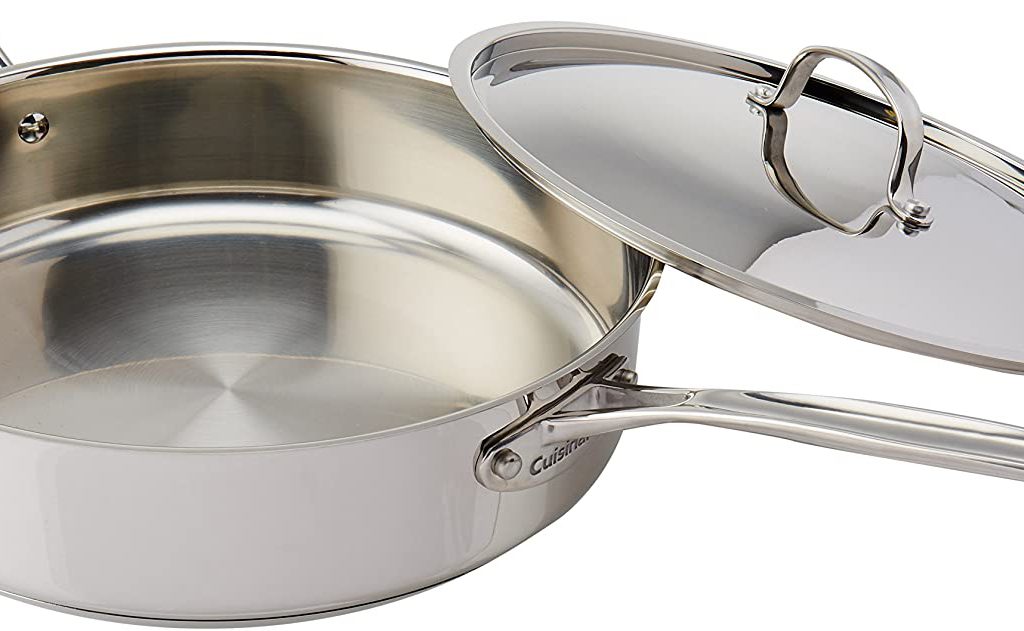
A saute frying pan can be considered a hybrid between a frying pan and a saucepan. Because saucepans are usually smaller, they aren’t that suitable for cooking or heating anything other than sauces and maybe a soup for two. Not so with this frying pan!
You can use it to make sauces and soup, as well as some additional recipes, such as Nabemono, while its wide base makes searing and sauteing so much easier. However, if you’re looking for something to cook liquid dishes in, a wide pan like this might make it hard to keep the liquid under control. And vice versa. For thicker sauces and stew-like soups, this pan will be the one you reach for the most.
Over and Out!
What to look for in a saucepan depends on what you like to cook the most. If you like making caramelized sweets, for example, you’ll need a lightweight pan that’s easy to maneuver to prevent your dessert from burning. If you make pasta sauces regularly, then a solid pan will serve you better.
Similarly, saucepans are great for heating up or preparing thick liquid foods. If that’s something you do often, getting one will make things much more practical in the kitchen. However, if you only cook soups and thin sauces once in a while, you’d be better off with a more multitasking pan.


